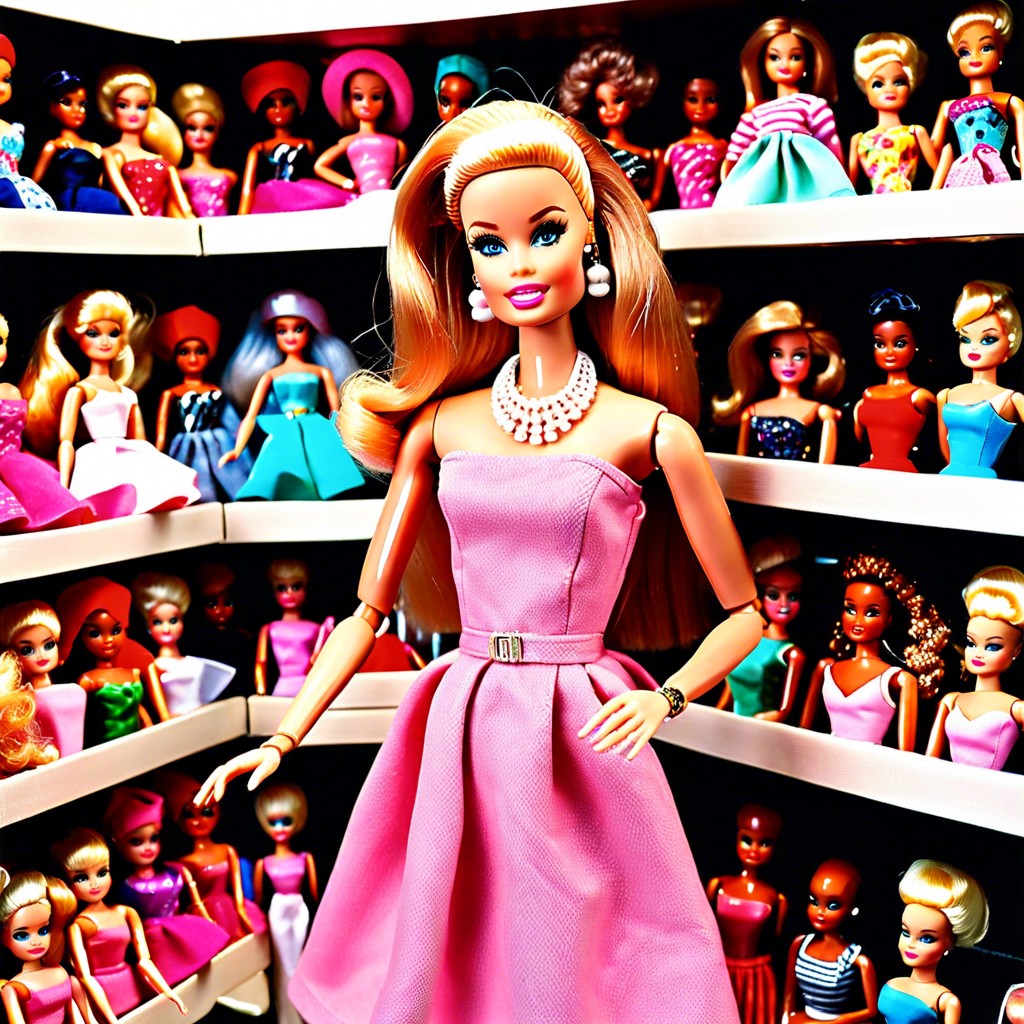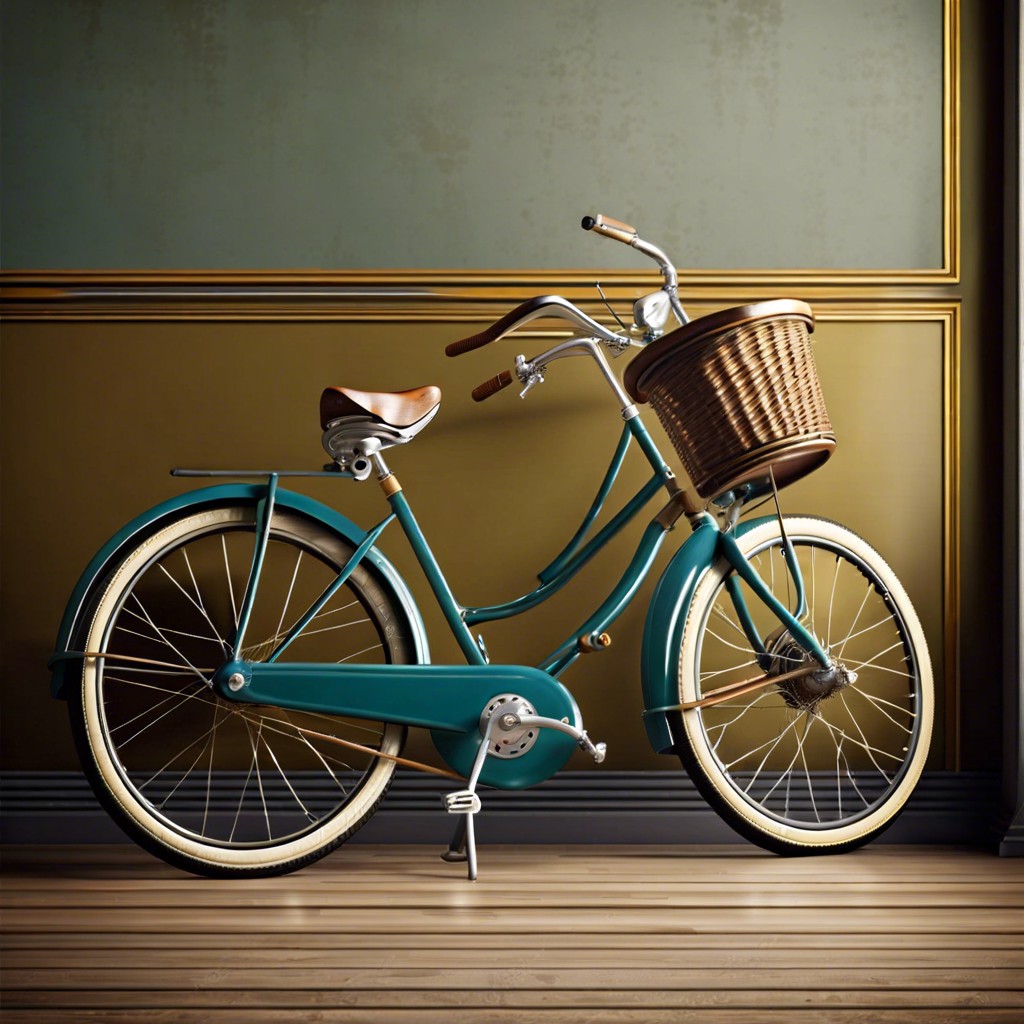Last updated on
Discover the charm and value of vintage toys and how they capture the essence of past childhoods and collector interests.
Key takeaways:
- Vintage toys offer historical insights and cultural reflections.
- Factors for valuing vintage toys: rarity, condition, provenance, market trends, authenticity.
- Tips for selling vintage toys: research, platform selection, accurate descriptions, timing, staying informed.
- Ethical considerations in restoring vintage toys: authenticity, documentation, age-appropriate materials, professional advice.
- Evolution of interactive play: from imagination-driven vintage toys to technology-integrated modern toys.
Historical Significance of Vintage Toys
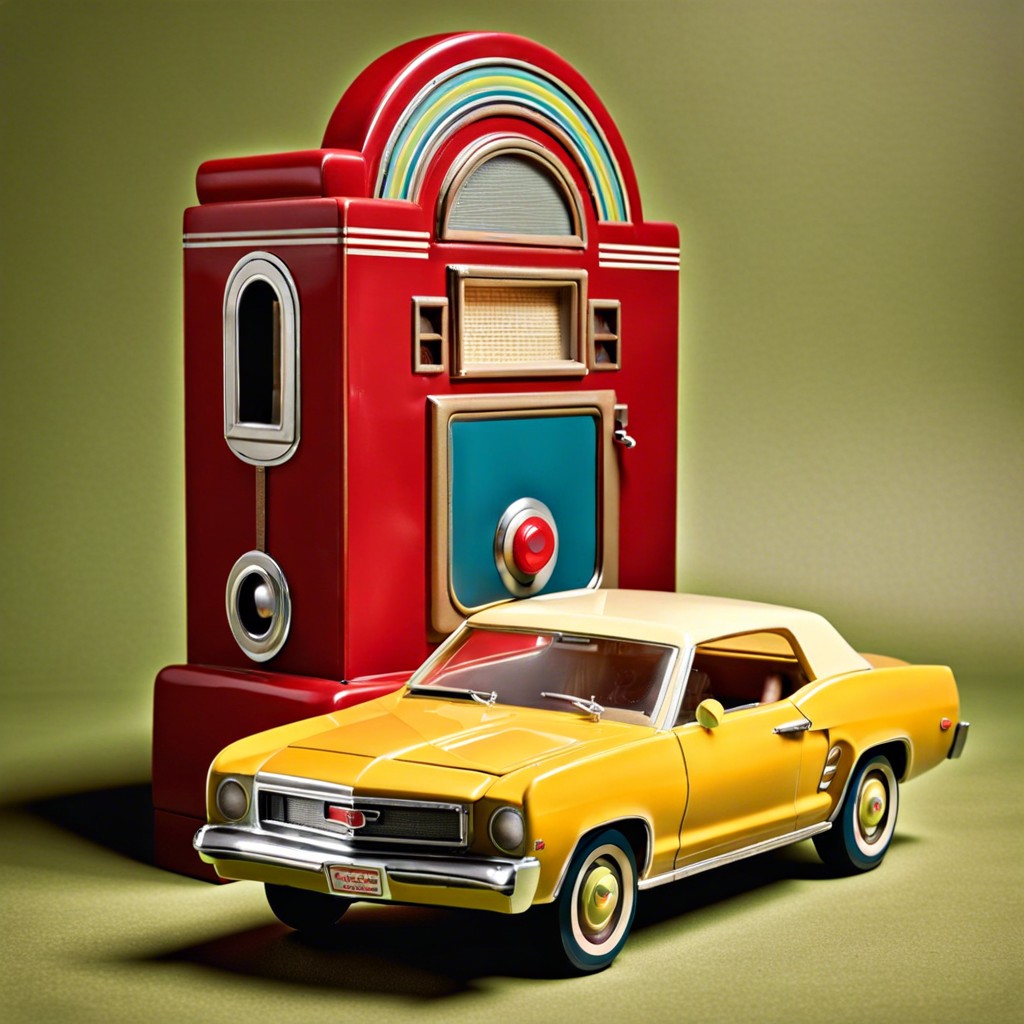
Vintage toys offer a window into the past, reflecting the cultural values, technological advancements, and artistic expressions of different eras. They serve as tangible reminders of the societal norms and day-to-day life experienced by previous generations, often encapsulating the zeitgeist of the period in which they were made.
From tin toys of the early 20th century, which exhibit the industrial boom, to the action figures of the 1980s, mirroring a growing fascination with science fiction and adventure stories, each toy tells a story. Understanding these stories allows us to track the evolution of child development theories, marking shifts from educational and skill-building playthings to those designed primarily for entertainment.
As artifacts of material culture, vintage toys also aid in historical research. Collectors and scholars can analyze the materials used, manufacturing techniques, and even the wear patterns to understand the economic conditions and technological capabilities of different times.
Preserved toys are particularly insightful, providing opportunities to study well-kept examples of craftsmanship and design aesthetics. Conversely, well-loved toys with signs of wear provide testimony to the emotional connections and experiences of the children who owned them.
Through vintage toys, we find a unique blend of nostalgia and historical inquiry, one that continues to capture the imagination and interest of collectors, historians, and enthusiasts alike.
Criteria for Valuing Vintage Toys
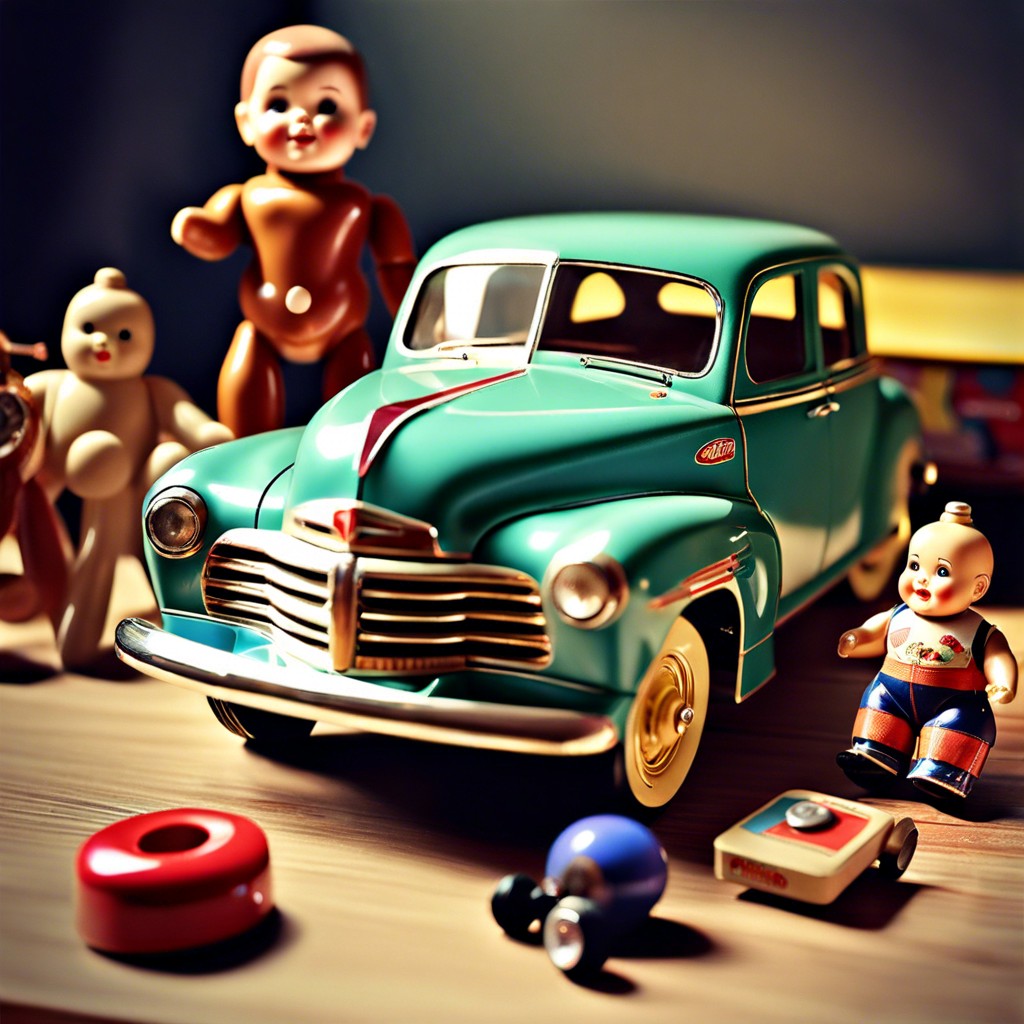
The worth of a vintage toy is contingent on multiple factors.
Rarity often tops the list; limited production toys or those from defunct companies typically carry higher value.
Condition is paramount, with mint or near-mint items fetching higher prices. Original packaging, especially unopened boxes, can significantly increase a toy’s value.
Provenance can add to a toy’s appeal; toys with a noteworthy history or previous ownership may attract premium prices.
Market trends fluctuate and can change a toy’s value over time, driven by nostalgia or renewed popularity through media exposure.
Lastly, authenticity is crucial for high value – reproductions or fakes are worth considerably less than genuine articles.
Navigating the Market: Selling Vintage Toys
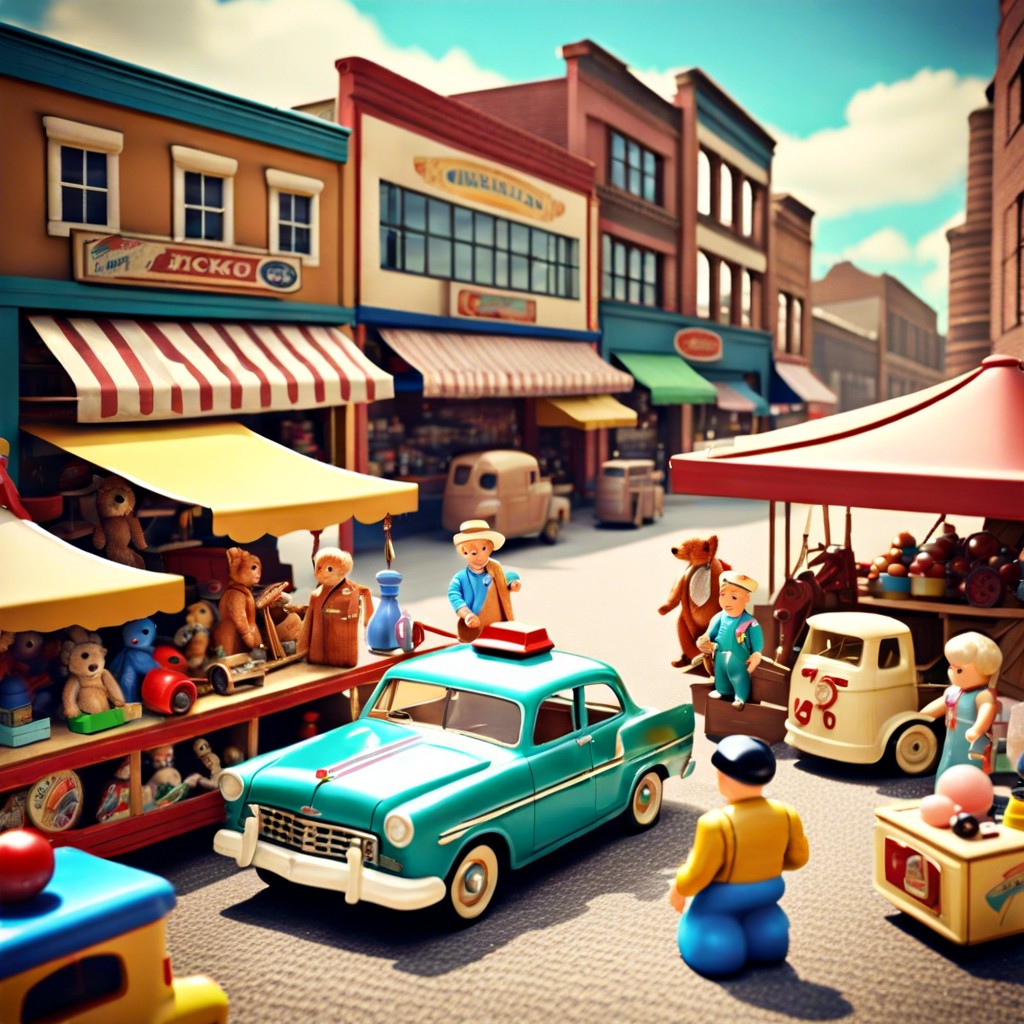
Understanding the market value of vintage toys is essential before selling. Research past auction results for similar items to gauge a toy’s worth. Condition significantly affects value; pristine items fetch higher prices while damaged goods attract less interest.
Identify appropriate platforms for sale: online marketplaces cater to broad audiences, whereas niche collectors’ forums might yield better returns for specific items. Consider professional appraisals for high-value toys to ensure pricing aligns with market expectations.
Accurate descriptions and clear, high-quality photographs are crucial in listings. Provide detailed information on the toy’s condition, provenance, and any restoration work carried out. Transparency builds trust and helps avoid disputes with buyers.
Timing can influence sales outcomes. Align the sale of seasonal or event-related toys with relevant times of the year to maximize interest and value.
Stay informed about trends in vintage toys; what’s sought-after may change, affecting prices and demand. Adapt strategies to these shifts to optimize sales outcomes.
Restoration of Vintage Toys: Ethical Considerations

Restoring vintage toys is a delicate balance between conservation and renovation. Authenticity is paramount, as original materials and construction methods add historical value. Over-restoration can strip away provenance, reducing a piece’s collectability.
Consider the intent behind restoration. Is it for personal enjoyment, museum display, or resale? For instance, museums favor minimal intervention to preserve as much original material as possible. Collectors, however, might prioritize aesthetics.
Documentation is crucial. Before any restoration, photograph the item from multiple angles. Record the original state to provide a point of reference for future care.
Source age-appropriate materials. Replacing parts with modern equivalents can diminish value. Hunt for period-appropriate fabrics, paints, and other materials to maintain the toy’s era-specific charm.
Consult professionals when in doubt. Skilled restorers can offer advice on how to proceed without compromising the toy’s integrity.
Be mindful of irreversible changes. Avoid actions that can’t be undone, as future restoration practices might evolve with new technologies and refinements in conservation ideology.
Bear in mind, restoration is often irreversible. A thoughtfully conserved vintage toy can bridge the past to present, but a poorly restored one may lose its historical significance and its story along with it.
Interactive Play: The Evolution From Vintage to Modern Toys
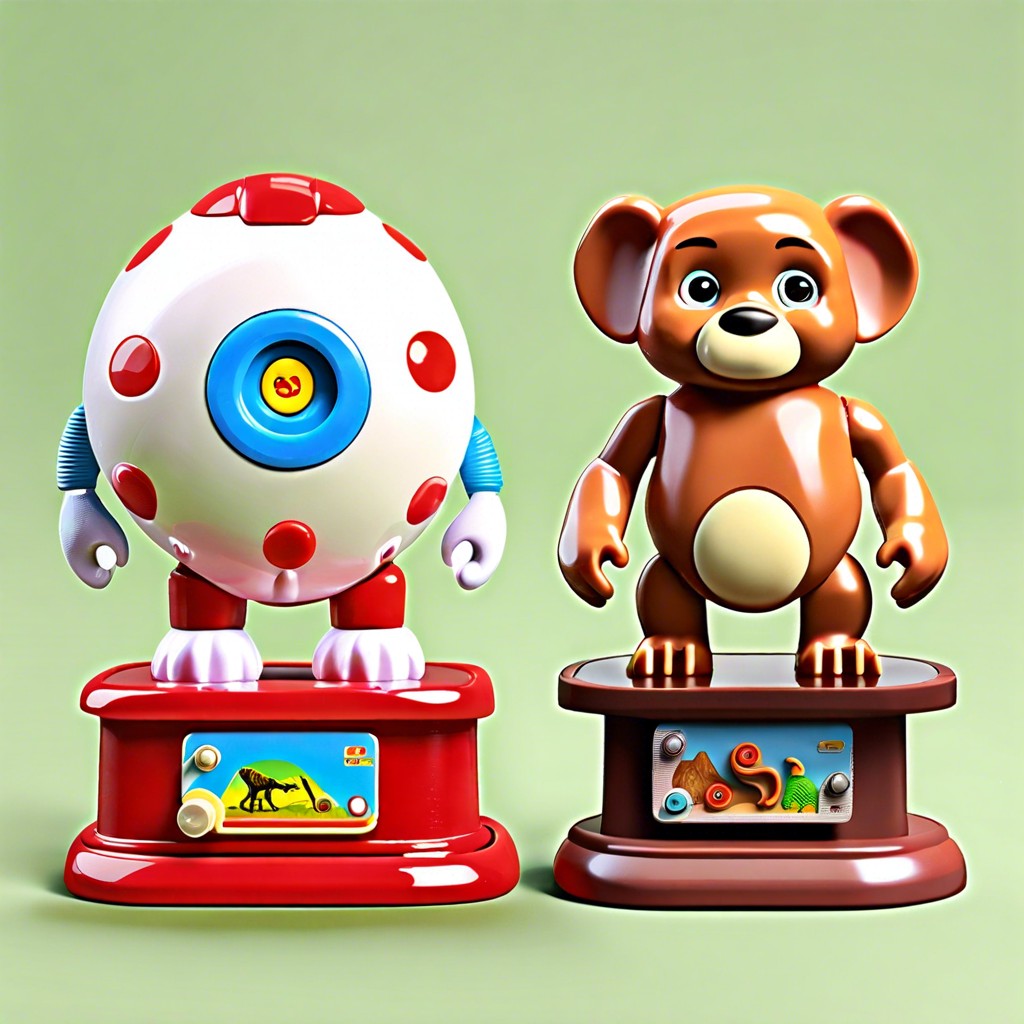
Vintage toys often required imagination and physical interaction to bring them to life. Think of tin wind-up figures, wooden toy soldiers, or early model trains. These playthings laid the foundation for the interactive toy experiences that children enjoy today.
Advances in technology have revolutionized play. Electronics introduced a new realm of possibility, with lights, sounds, and movement now a commonplace aspect of children’s toys. This digital integration allows for a more immersive play experience, exemplified by toys like Tamagotchi, which invite children to care for a virtual pet.
The introduction of programmable and educational toys, such as LEGO Mindstorms, has blended play with learning. These modern inventions not only entertain but also teach valuable skills in logic, problem-solving, and coding.
Connectivity has expanded the scope of play further, allowing toys to interact with apps and games on smartphones and tablets. Examples include augmented reality experiences where physical toys become part of a digital world.
The evolution from vintage to modern toys reflects a shift towards interactivity and digital integration, highlighting changes in societal technology and educational values in play.
Related:

